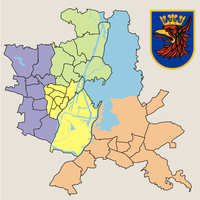Inland waterways
7.47

Overview
Poland's inland waterways played a crucial role in the development of transport and the economy, especially before the partitions. The Vistula River was the most important water route, connecting the country with Gdańsk, and Vistula trade reached its peak in the 17th century, making Poland the "breadbasket of Europe." Thanks to numerous ports and Vistula cities such as Kraków and Toruń, grain and timber were primarily transported there. Meanwhile, the construction of canals, like the Dobrzycki Canal in the 14th century or later water connections between river basins, aimed to develop transport networks. However, after the Third Partition of Poland, geopolitical divisions hindered the functioning of waterways, and each of the partitioning powers assigned different transport significance to the Vistula, primarily for Prussia, which treated it as a bridge between Berlin and Königsberg. In the 19th century, despite the creation of new canals and systems, such as the Elbląg Canal, navigation lost importance to railways. After World War II, despite favorable conditions, the state of Poland's waterways deteriorated. Currently, managed by the State Water Holding "Polish Waters," Poland's waterways still require investment and modernization to become competitive, with their total length amounting to approximately 3,800 km. International waterways, such as E30, E40, and E70, connect Poland with the European water network, but their condition remains uneven, limiting transport. Despite these challenges, inland waterways have the potential to become a more significant component of Polish transport, especially in the context of eco-friendly shipping methods.
Location
Tickets
Powered by GetYourGuide
2025 Wizytor | All Rights Reserved





